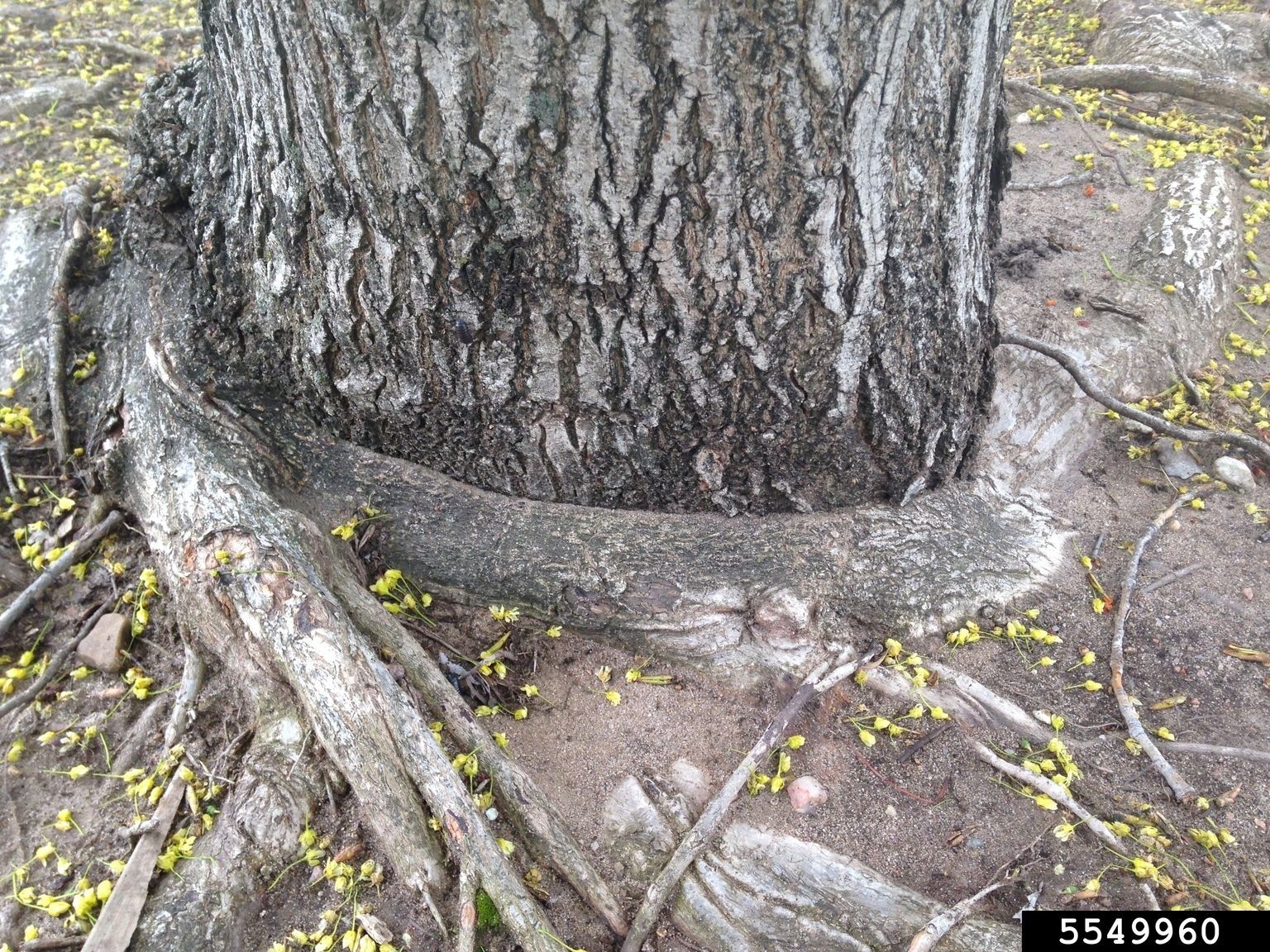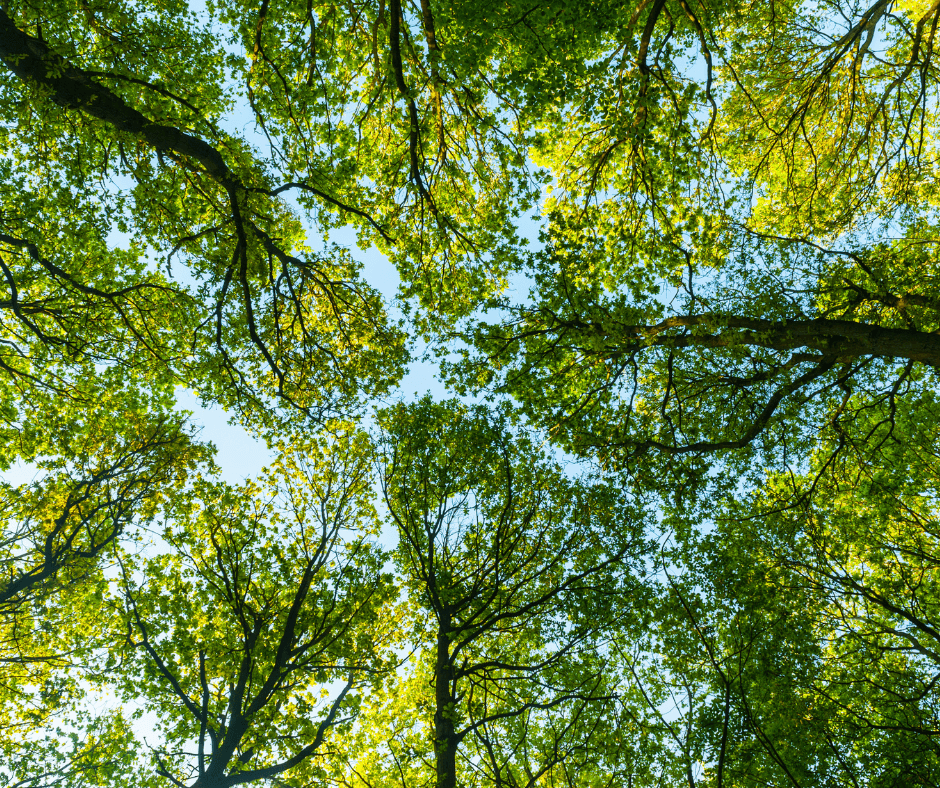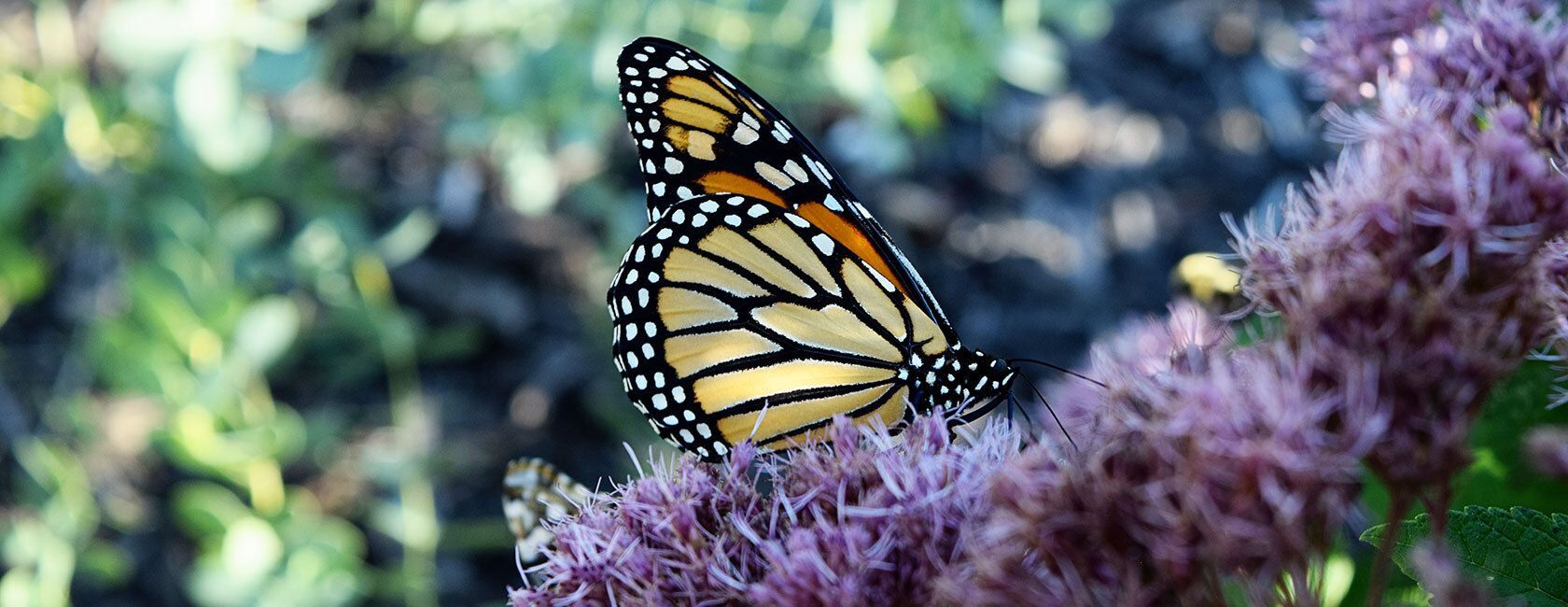
Fall—September through late October—is the best time to plant new trees. Cool temperatures and increased rainfall help roots establish quickly, giving trees a head start on spring growth. Root growth continues well into fall until soil temperatures dip below 40°F.
But to have a healthy tree, which provides lasting shade, beauty, and wind protection to your landscape, it must get off to a good start with correct planting. Planting mistakes can quietly undermine tree health for its entire life.
The Hidden Problems
Many people assume nursery trees are ready to plant as-is. Yet tree production methods often create two serious, slow-acting issues: planting depth and stem girdling roots (SGR). Both problems weaken trees, resulting in stunted trees which grow slowly and in later years, are more prone to pests, drought, and other stresses throughout their entire life.
Planting depth issues arise when a tree’s root system is buried too deeply. This restricts root growth due to:
1. Low oxygen levels deeper in soil,
2. Insufficient moisture at depth, or
3. Excessive moisture in poorly drained soils.
Deep planting wasn’t widely recognized as a major health threat until the past 20–25 years. Now foresters know that if a tree’s first major root is not near the soil surface, its health will be compromised for life. Trees planted too deep may never anchor firmly in the soil. Their reduced vigor makes them vulnerable to decline and insect attacks.
How does this happen? Young trees planted mechanically in fields are often set too deep to keep them upright. Later, when trees are dug and potted or balled, gardeners often fail to remove excess soil from the top of the root ball. Container-grown trees can also be buried too deeply in pots, carrying the problem straight into the landscape.
The solution: When planting, locate the tree’s root flare—the point where the trunk widens into major roots—and make sure it’s visible at the soil surface. Learn how to find the root flare.
Stem girdling roots develop when roots wrap around the trunk instead of spreading outward. Unlike normal root grafting between roots of the same tree, a root pressing against the trunk doesn’t fuse—it strangles. Over time, both trunk and root thicken resulting in a constriction point which chokes off water and nutrient flow.
The cause often traces back to container production. When roots hit the smooth wall of a plastic pot, they circle inside instead of branching outward. Because trees are often “bumped up” from smaller to larger pots multiple times, hidden girdling roots can form early and go unnoticed.
Pot design is now a big focus for growers trying to reduce this problem. But for homeowners, prevention means inspecting and correcting roots before planting.
The solution: Carefully shave or prune the root ball to remove circling roots and prevent future girdling. Learn how to shave the root ball.
Give Your Tree a Strong Start
· Check planting depth. Ensure the first major root is just below the soil surface.
· Expose the root flare. Remove excess soil from the top of the root ball.
· Correct circling roots. Shave or prune before planting.
Taking time to fix these problems at planting helps trees grow faster, stay healthier, and withstand stress for decades to come.
Image credit: Ryan Armbrust, Kansas Forest Service, Bugwood.org


